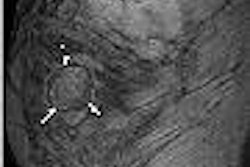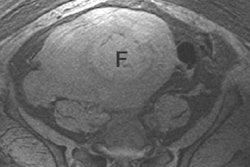To parody a long-running TV commercial: New MR-safe wheelchair, $2,000. MRI suite safety audit, $10,000. Knowing your suite has been made as safe as it can be, priceless.
Those of us in the MR safety business don't count on the field making us rich. We do it, in part, because we believe it is the right thing to do. It gives us a warm and fuzzy feeling about the value of our work. Perhaps the part that gets the least attention is that, by adding safety, we enhance the financial performance of our clients.
Many people look at the first costs of improvements or enhancements to an imaging facility as lost money. This assumes that the American College of Radiology (ACR) four-zone principles, patient visualization, and accident prevention are weighed with the same criteria used to determine whether more expensive wallpaper is justified. Unlike the preceding safety examples, however, the wallpaper won't provide a facility with significant improvements in efficiency or patient care.
In January 2005, a hospital in the Seattle area suffered an all-too-familiar floor-polisher-meets-MRI accident. Preliminary reports from the hospital put the price tag at over $200,000 for repairs, and the lost revenue probably exceeded the repair bill.
If you feel there's only a 1% chance that this sort of accident could happen at your facility in any given year, and you plan to run your magnet for 10 more years, you've just identified at least $20,000 in risk-weighted liability in repair costs alone. If you can improve safety and cut the chances of such an accident in half, you've cut your risk-weighted liability by at least $10,000.
And while it may be statistically insignificant, MRI accident survey results featured in a 2001 report by Dr. Gregory Chaljub and colleagues suggested that major accidents occur far more frequently than 1% per year. True risk-weighted liability, for each MRI in America, may well exceed $100,000 for magnet damage alone over a 10-year period (American Journal of Roentgenology, July 2001, Vol. 177:1, pp. 27-30).
Consider, also, the daily revenue generated from an MRI in full operation. Think of 10-15 patients per day at up to $1,000 per patient. Every day of operation could be worth over $10,000 in revenue to the hospital. If a 45-minute scan can generate up to $3,000 in revenue from a self-paying patient, then every minute of magnet time can be worth $65. A single service-interrupting accident starts the meter on lost revenue, and it doesn't take long for those numbers to look very, very ugly, even on standard reimbursement schedules.
Nearly every MRI facility has had the experience of prying cell phones, chairs, or hand tools from the bore of their magnet. At the Seattle hospital, the damage was further exacerbated by the untrained staff's attempt to remove the floor polisher. Their ill-advised effort failed to remove the polisher, but did succeed in losing jewelry and destroying hearing aids worn by the staff. By doing this, the staff only put themselves and the hospital at greater risk by entering the magnet room without proper screening.
A large number of MRI facilities have had these sorts of accidents where they couldn't remove the object themselves. If you can't remove an object from the bore of the magnet with only two people and bare-handed elbow grease, then it's time to call the vendor representative to ramp down the magnet to remove the object. The vendor time on these jobs often starts at around $20,000. But even when a stuck object is successfully removed by the facility staff, it can be at least a several-thousand-dollar-loss afternoon.
Fortunately, there are also more immediate, tangible, and positive results from incorporating safety principles in your MRI suite. It turns out that many design features that enhance safety also facilitate more efficient patient management. Whether it's a technologist's ability to visualize patients in the holding areas, or a streamlined patient flow-through screening procedures, making safety protocols easier enhances patient care and throughput.
Every efficiency goal realized in getting patients through screening and preparation processes more quickly produces a greater and greater opportunity to scan one more patient toward the end of the day. We shouldn't equate patient care with an assembly line, but we can borrow some of the efficiency lessons from other fields. If we can provide equal care with faster preparation and fewer screening errors, this means greater efficiency.
When the design and operation of a facility can reduce the risk-weighted liabilities, increase magnet uptime, and enhance patient throughput, the payoffs come not in nickels and dimes, but in thousands and tens of thousands of dollars. And the longer you run the magnet, the higher the accumulated payoff becomes.
While it is possible to go overboard and spend money fruitlessly in an MRI suite, safety isn't the area to worry about cutting costs. Investments in suite-safety planning, efficiency, and equipment can all stem the losses that arise from events that too many facilities accept as inevitable. And when these considerations are included in the initial planning for new equipment or a planned renovation, the up-front costs plummet.
For the staff and administration at every MRI installation -- but particularly those facilities with more than one magnet -- take a close look at keypad or proximity card access-control systems. Think long and hard about ferrous-only detection systems. Evaluate what your technologists can see from their console and determine if there's more that could be done. More often than not the solutions for enhancing safety and quality of care in the MRI suite are also solutions for enhancing the bottom line.
By Robert Junk and Tobias Gilk
AuntMinnie.com contributing writers
June 16, 2005
Reprinted from www.mri-planning.com by permission of the authors. If you would like more information on any aspect of MR facility design or safety, please contact Robert Junk or Tobias Gilk at Jünk Architects.
Related Reading
Part II: Answers to the 10 questions to ask your architect about MRI suite design, April 7, 2005
Part I: 10 questions to ask your architect about MRI suite design, April 5, 2005
The 3-tesla MRI swap: Why it's not a simple upgrade, January 27, 2005
Chilled loop failure: How to break your magnet without even trying, December 8, 2004
HIPAA compliance strategies for MR control rooms, October 26, 2004
Copyright © 2005 Jünk Architects, PC



.fFmgij6Hin.png?auto=compress%2Cformat&fit=crop&h=100&q=70&w=100)




.fFmgij6Hin.png?auto=compress%2Cformat&fit=crop&h=167&q=70&w=250)











